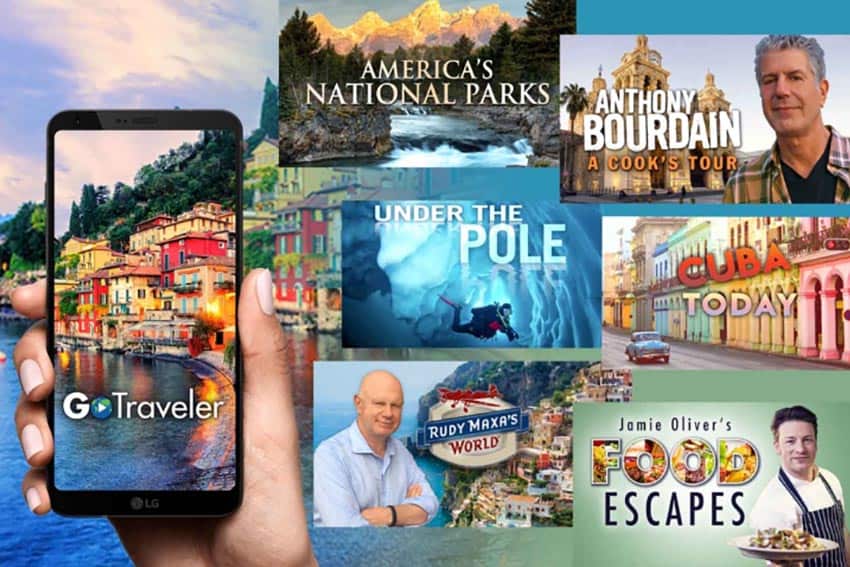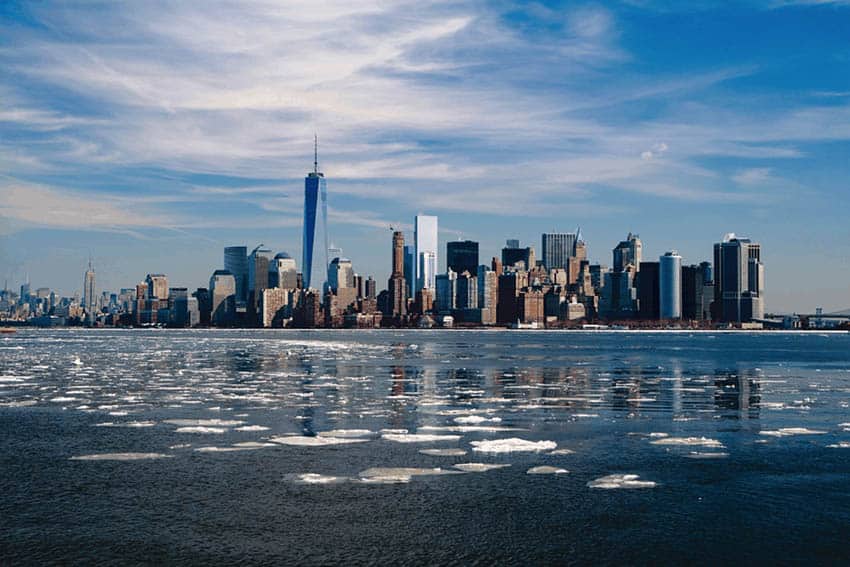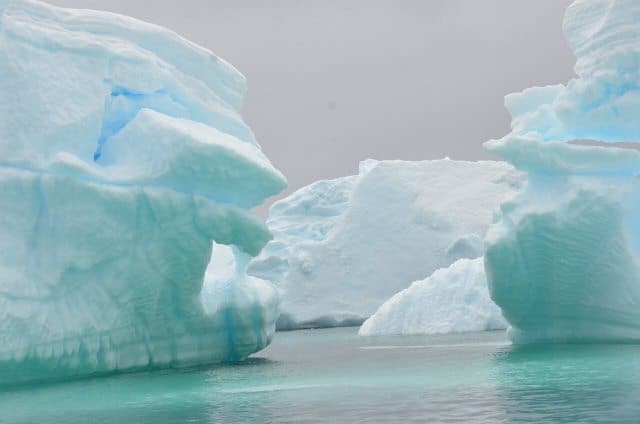
Creative ways to get to Antarctica cheaper than you think
By Carly Blatt
“The first Zodiac to the island will launch in 10 minutes!” Our expedition leader’s voice boomed throughout the P.A. system of our ice-strengthened ship, which was currently anchored just off Half Moon Bay Island in Antarctica. Dozens of keen explorers rushed to queue up for the inflatable Zodiac boats like eager skiers racing toward their favorite chairlift.

Our group wasn’t packed with the crowd who would have been the mainstays of an Antarctica voyage ten years ago when expedition prices were all but impossible for anyone except the wealthiest of travelers to afford.
With more and more ships and operators entering the Antarctic market, tour prices have dropped sharply and opened up the fifth-largest continent to those of us who can’t afford to spend the equivalent of a year’s rent venturing to the southern land mass.
My particular ship boasted a mix of travelers ranging from the 23-year-old recent graduate traveling on her own to the ruddy-faced middle-aged man who’d been fascinated with Antarctica since his teens to the retired couple from the Midwest celebrating the husband’s birthday.
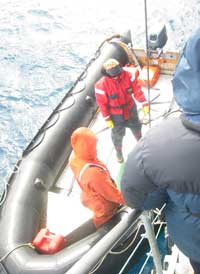
With companies like G.A.P. (Great Adventure People) entering the market and offering expedition prices at around three thousand dollars with no single supplement charge for individual travelers who want to be paired with a same-sex roommate, this trip of a lifetime doesn’t have to remain a dream.
Down the Gangway
The line moved quickly and soon we were gingerly climbing down the gangway and onto a Zodiac boat that resembled a hard, rubber dinghy. Layered to the nines, ten of us settled onto our perches and grabbed a hold of the rope that circled the boat for safety.
Our ears stung as the driver gunned the engine, waking up the otherwise silent setting and treating any nearby marine life to a morning wake-up call.
Our driver raced away from the ship, creating tiny, rippling waves as we sliced through the near-freezing water. The patches of stark sunlight and the nearly blinding brightness of the white and blue-tinted icebergs seemed to warrant wearing sunglasses despite the finger-numbing weather outside. Our driver maneuvered around towering icebergs the size of large houses and past flatter “tabular” icebergs spanning longer distances than top NFL kickers could ever dream of kicking a field goal.
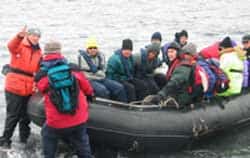
A traveler works his way down the gangway and onto the Zodiac boat below. The roller coaster-esque ride was over far too quickly. As we landed on the beach of a small island in Antarctica and stepped out into the surprisingly clear water, I reflected on the fact that there is something undeniably sexy about traveling to the “seventh” continent.
Perhaps it’s the fact that it’s always seemed nearly unattainable. Not to mention the fact that chances are pretty high that after returning from a trip to the far South, you’ll be the only one with seventh-continent bragging rights at most cocktail parties.
The Lure of Little Voices
Perhaps legendary Antarctic explorer Sir Ernest Shackelton explained the magic best: “Some are actuated simply by a love of adventure, some have the keen thirst for scientific knowledge, and others again are drawn away from the trodden paths by the ‘lure of little voices,’ the mysterious fascination of the unknown.”
Whether it’s penguins or petrels or seals or sea ice that initially attract you to travel south, you’ll soon quickly fall in love with the rest that the icy continent has to offer.
And yet, all travelers to Antarctica have to be at least slightly amused that their choice of holiday landed them in a place that’s frequently described as the coldest, windiest and highest continent anywhere on earth. But the southern continent’s extremes are often the exact reasons travelers choose to make the journey.
Chinstrap Penguins
As we climbed onto the rocks of the beach, and then further up to the area where the loosely packed snow began, dozens of knee-high Chinstrap penguins ran up to greet us. I marveled at how close we were able to get to the tuxedo-clad creatures and how much nicer it was to see them only yards away – in their natural environment – than through a thick sheet of glass at an overcrowded zoo.
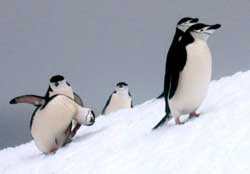
How they seemed to walk so easily was a mystery to me, since none of the humans could manage to walk in the quicksand-like snow without having our feet sink nearly 12 inches with each step. Simply getting around the island in this manner was easily more of a workout than spending 30 minutes on a Stairmaster at an advanced setting.
Our jealousy of the penguins soon waned as we learned that they seemed to have more difficulty walking on land than a bull-legged cowboy trying to compete in a balance beam competition. They frequently walked too fast and slipped as they ambled up hills, while their tiny feet made nearly inaudible crunching sounds as they made their way across the snow.
As social animals, the penguins were exceedingly talkative. They often hung out in massive groups and chatted amongst themselves, making me wish there was some sort of penguin language translator.
The fascinated homo sapiens stood in relative silence only fifteen feet away, remaining silent save for the occasional whisper and the click of a shutter release from a camera.
Even though the flightless birds didn’t have any predators on land and weren’t afraid of us, we wanted to do as little as possible to disturb their environment. After all, we were mere guests in their home.
Weddell Seals
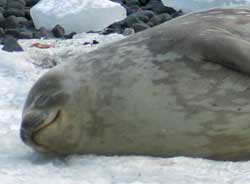
We climbed up a hill to the other side of the island and discovered a snow-covered beach where peaceful Weddell seals lay sunning themselves.
When they moved, they did so slowly and with great effort, but they seemed more content to stretch out and stare at us through their guileless, huge, dark eyes that reminded me of a puppy’s. Though they weren’t active like the penguins, I could have spent half the morning staring at these serene animals..
We spent several hours on the island – hiking, wandering, exploring, and studying the wildlife – before we returned to the ship to set off for our next stop at Deception Island, where we’d have the opportunity to swim in polar waters. Not quite your average day off a cruise ship, but then again, this wasn’t your typical cruise.
The Basics
Antarctica is a haven for adventurers, animal lovers, bird watchers and iceberg junkies with a penchant for exploring places few travelers have experienced. The tourist season in Antarctica runs during the austral summer from November to March. Berths on expedition ships often book quickly and reserving your space far in advance is recommended.
How to Get There
Many expedition ships to Antarctica leave from Ushuaia, Argentina and make the two-day trip across the Drake Passage to the continent.
Your best bet is to fly into Buenos Aires, Argentina and take an internal flight to Ushuaia. American Airlines, United Airlines, and Delta Airlines are among the major U.S. airlines that fly from the States to Buenos Aires.
Argentine carrier Aerolineas Argentinas serves the Buenos Aires-Ushuaia route and also flies between the U.S. and Argentina.
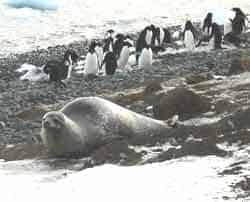
It is also possible to visit Antarctica leaving from New Zealand or Australia, although these voyages require a much longer crossing to reach the actual continent.
What to Bring
Many travelers head down to Antarctica with hundreds of dollars worth of the latest, high-priced polar gear, which they often find unnecessary once they arrive. As a rule, you’ll fare best bringing a warm, waterproof or water-resistant parka, waterproof pants or ski pants, plenty of layers of thermal underwear and high, waterproof boots, as well as the typical winter-weather gear like gloves, scarves, and hats. Boots and waterproof pants are important since you’ll often be stepping into the calf-high water during landings. Much of your Antarctic gear can be rented cheaply in Ushuaia at places like Antarctica Equipment.
Additional information
Companies like G.A.P. offer spots beginning at $3015, which includes all meals, activities, Zodiac boat rides, scientific lectures, and entertainment. Shorter adventures to Antarctica tend to focus primarily on the Antarctica peninsula and nearby islands, while longer voyages also include visits to the Falklands and South Georgia. When selecting your Antarctic journey, the most important factors to keep in mind are trip length, price, locations visited, and the number of people the ship holds.

An avid fan of adventure travel, New York-based freelance writer Carly Blatt has traveled extensively, covering 26 countries on six continents.
- The Wild Mississippi: 2340 Miles Across Ten States - April 8, 2024
- Exploring the Floating Villages of Tonle’ Sap Lake - April 3, 2024
- Woman Traveling Solo on Turkish Buses - March 27, 2024


